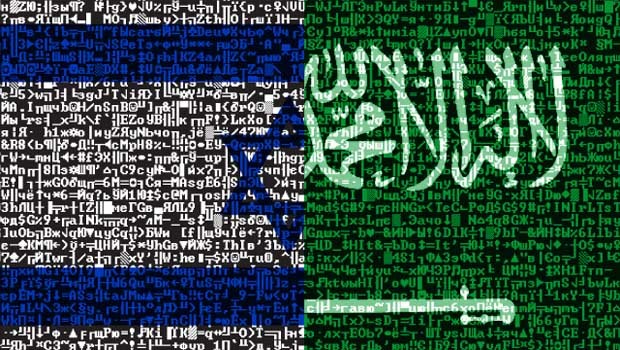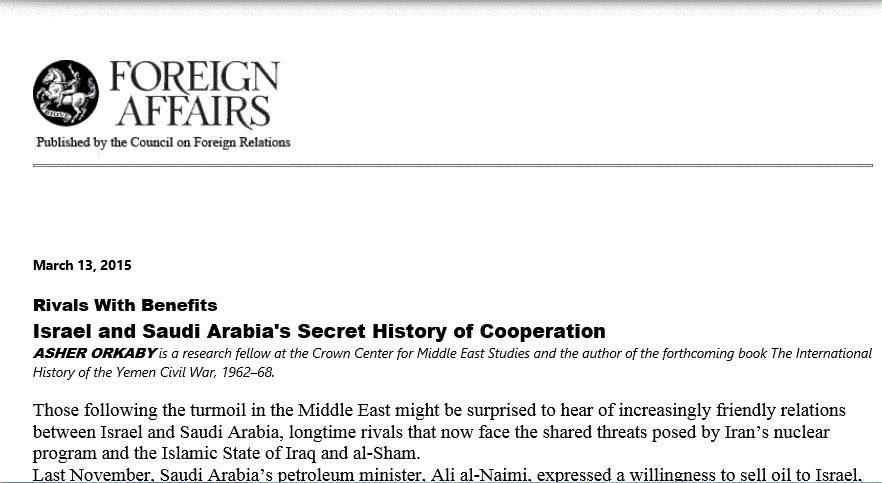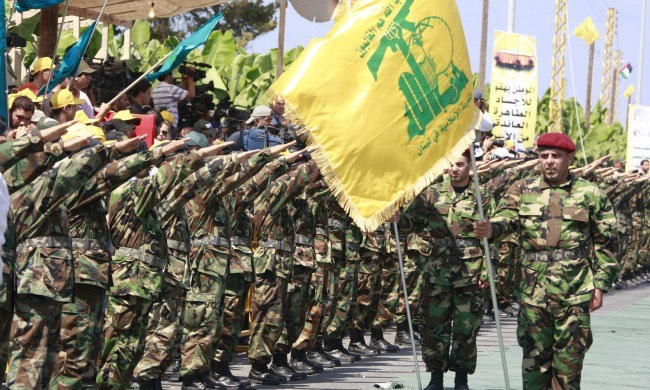Amikor “Aré Oz” volt az “Isten” – A szaúdi-izraeli kapcsolatok titkos múltjáról
2015. 06. 22.
Egy amerikai külpolitikai magazin birtokába jutott jelentések alapján látott napvilágot az a szaúdi izraeli együttműködés, ami a 60-as évekbeli jemeni polgárháború idején működött. Az események kísértetiesen hasonlít napjainkban zajló jemeni konfliktushoz.
A XX. századi Jemen történelme során nem telt el úgy évtized, hogy a belső konfliktusokat kihasználva a térségbeli államok és nagy hatalmak ne avatkoztak volna bele valamelyik fél oldalán ezzel fokozva a konfliktus nagyságát.
A 60-as években a monarchisták és a köztársaság pártiak álltak egymással szemben. Míg az utóbbiak Jemen egyesítésére törekedtek egy demokratikus szocialista berendezkedést képzeltek el, addig a másik fél a jemeni monarchia fennmaradásáért harcoltak.
Akkoriban az arabvilág vezető politikusa Gamal Abdul Nasser egyiptomi elnök képviselte a pánarab eszmék és a szocialista köztársaság ideológiáját. Ennek tudható be, hogy a jemeni konfliktusban a köztársaság pártiakat támogatta, nem csak fegyverekkel, hanem egyiptomi csapatokat is küldött Jemenbe. A monarchistákat az abszolút monarchia vahabita Szaúd-Arábia finanszírozta.
Korunk egyik híres arab írója Naram Sarjoon tényfeltáró cikkében, amit a Foreign Affairs által publikált bizonyítékok alapján írt, emlékezettet minket, hogy a vahabita-cionista koalíció már évtizedek óta a háttérben közös érdekek mentén politizál.
“Gamal Abdul Nasser egyiptomi elnök a pánarab ideológia meghonosítása érdekében támogatta Jemen utolsó királya Bader Imám ellen felkelő jemeni mozgalmakat. A jemeni forradalom veszélyt jelentett mind a szaúdi vahabita királyságra, és a cionista Izrael államra egyaránt. Ezért kétségtelen, hogy a brit titkosszolgálati ügynökök támogatásával a két állam egy műveleti szobába egyesítették erejüket.”
„Szaúd-Arábia és az Egyesült Királyság úgy döntöttek, hogy a királysághoz hű harcosokat felfegyverzik. Viszont kénytelen voltak szembesülni azzal a ténnyel, hogy a jemeni földrajzi körülmények miatt nehezen kivitelezhető a fegyverszállítmányok eljuttatása, ezért titokban háttér megállapodást kötöttek Izraellel, hogy légierőjével támogassa a fegyverszállítmányok eljuttatását. Ez az együttműködés hosszú évtizedekig szigorú titokban maradt.”
„Aré Oz az izraeli légierő kapitánya a 120-as vadászgép osztag vezetője vállalta a feladatot és 14 szállítmányt juttatott el 1964 és 1966 között. A szabaddá tett szaúdi légteret használva elkerülve az egyiptomi radarokat és a vörös tengeren járőröző egyiptomi vadászgépeket kikerülve, fontos fegyverszállítmányokat dobott le a jemeni monarchistáknak, aminek a segítségével súlyos veszteségeket tudtak okozni az egyiptomi hadseregnek. Akkoriban mítoszként terjedt a monarchisták körében, hogy Allah az égből fegyvereket dob le, ezzel segítve Bader imám csapatait. Mint később kiderült a 60-as években Allah az nem más, mint Aré Oz izraeli kapitány volt, mint ahogyan napjainkban az iszlamista harcosok által hangoztatott ismeretlen angyalok támogatása a cionista rezsim vezetői, mint pl: Benjamin Netanyahu, akinek többször is tiszta szívből gratuláltak a magukat szíriai ellenzékként definiált terroristák az újraválasztása napján.”
„Arról a Netanyahuról van szó, aki saját maga látogatta meg a cionista rezsim által felállított kórházakban lábadozó terrorista szervezetek sebesült harcosait. Magasztos imák keretei között küldte vissza őket biztonságos utakon műholdas térképekkel ellátva, amiket „Allah” szemei fényképezték. Az izraeli vadászgépek „angyalokként” támadták meg a Szíriai Arab Hadsereg és a Hezbollah alakulatait, hogy az „Istenfélő” iszlamisták nyakuk köré szorult húron lazítsanak.
„Ma Szaúd-Arábia ismételten a muszlimok eltiprásáért újra Izraellel szövetkezik. Titokban de már nyíltan is együtt harcol Izraellel az Irán-Szíria-Hezbollah hármas tengely ellen. Napjaink 120-as izraeli alakulat legfontosabb fegyverei az Iszlám Állam, a Nuszra Front és az Al-Kaida öngyilkos merénylői, akiket a szaúdi titkosszolgálat toborzott a vahabita mecsetekben. Ezeket Izrael óhajára bármikor északról délre Jemenbe, vagy délről északra Szíriába és Irakba csoportosítja át. Mindemellett Szaúd-Arábia olajügyi minisztere sajtótájékoztatójában közölte, hogy a szaúdi királyság ásványkincseit Izraelnek is eladná.”
„Szaúd-Arábia és Izrael együtt születtek, együtt nőttel fel, együtt szeretnek, együtt gyűlölnek, együtt mennek a „Dzsihadba”, együtt győzedelmeskednek, együtt veszítenek, és együtt is halnak majd meg.” – írta Naram Sarjoon.
Orientalista.hu –Cadmus (Naram Sarjoon írása alapján)
Források: Haaretz, Jpost, Ynetnews.
A Foreign Affairs angol nyelvű cikke:
Rivals With Benefits
Israel and Saudi Arabia’s Secret History of Cooperation
ASHER ORKABY is a research fellow at the Crown Center for Middle East Studies and the author of the forthcoming book The International History of the Yemen Civil War, 1962–68.
Those following the turmoil in the Middle East might be surprised to hear of increasingly friendly relations between Israel and Saudi Arabia, longtime rivals that now face the shared threats posed by Iran’s nuclear program and the Islamic State of Iraq and al-Sham.
Last November, Saudi Arabia’s petroleum minister, Ali al-Naimi, expressed a willingness to sell oil to Israel, which it still does not formally recognize. “His Majesty King Abdullah has always been a model for good relations between Saudi Arabia and other states,” Naimi told reporters in Vienna, “and the Jewish state is no exception.” Just months earlier, former Saudi intelligence chief Prince Turki al-Faisal published an op-ed in the Israeli newspaper Haaretz[1]. Although al-Faisal did little more than reiterate the Arab League’s traditional position on the peace process—namely that Israel withdraw to its pre-1967 borders—publishing in an Israeli newspaper represented a significant overture. These gestures followed years of speculation that Israel and Saudi Arabia might coordinate an attack on Iranian nuclear facilities.
However notable these developments are, unofficial cooperation between the two countries is hardly unprecedented.
As early as the 1960s, Israel and Saudi Arabia found common ground when it came to countries or movements that explicitly threatened both of their existences. The two countries didn’t merely align their strategies, however; they collaborated on a tactical level, too.
During the 1960s, that threat emanated from Egyptian President Gamal Abdel Nasser, the leader of the Arab Nationalist movement and the most popular figure in the Middle East. His political speeches and radio broadcasts reached millions across the Arab world, and Israel, Saudi Arabia, and the United Kingdom were its frequent targets.
When a cadre of Yemeni officers with Arab-nationalist sympathies toppled Yemen’s theocratic monarchy in 1962, Nasser dispatched some 70,000 Egyptian troops to support the new republic’s war against old-regime loyalists. Nasser also declared his intention to carry the revolution even further, to Saudi Arabia, on Yemen’s northern border, and to the British colony of Aden, to the south.
Saudi Arabia, meanwhile, offered the royalist tribes money and refuge while a team of British mercenaries attempted to funnel military aid to anti-Egyptian forces on the ground. But northern Yemen’s mountainous terrain proved a major stumbling block, making it extremely difficult to deliver weapons and supplies to beleaguered tribal militias on the ground.
Since neither London nor Riyadh wanted to openly support the royalist forces, they needed a partner that would be willing to organize airlifts clandestinely over hostile territory.
They turned to Israel, the only country with more to lose than Saudi Arabia from an Egyptian triumph in Yemen. Israeli leaders, for their part, believed that supporting a proxy conflict with Egypt would forestall an Egyptian-Israeli confrontation in the Sinai, keeping Nasser too preoccupied to attack Israel.
The celebrated Israeli transport pilot Aryeh Oz, then serving as the leader of Israel’s International Squadron 120, led the mission. Using a retrofitted Boeing Stratocruiser, he oversaw 14 flight missions to Yemen’s northern highlands between 1964 and 1966, carrying vital weapons and supplies that, in numerous cases, helped turn the tide of battle in favor of the royalists. Israeli pilots charted a flight path directly over Saudi territory, avoiding Egyptian fighter jets patrolling the Red Sea.
Planning and decision-making were limited to a select number of British mercenaries, Israeli leaders, Saudi royals, and the ousted Yemeni imam and his foreign minister. To ensure the safety and secrecy of the missions, they left the general Saudi and Yemeni populations in the dark about Israel’s involvement. One of the airdrops, for example, took place after the deposed leader had announced to his tribal leaders that supplies would be dropped from the sky. “Look, even God is helping the imam,” a British intelligence agent heard one of the commanders declare in the drop zone.
The civil war ended in 1968; following a series of agreements, the royalist and republican factions united to form the Yemen Arab Republic in the northern half of the country. If the Israelis and Saudis managed to put aside their differences back then, they certainly could do the same today. Both countries consider the prospect of a nuclear Iran just as threatening, if not more so, than they viewed the possibility of an Egyptian foothold in Yemen during the 1960s. And the danger is urgent enough that it could prompt tactical cooperation under certain circumstances, especially if Tehran appeared to be close to completing a bomb.
Moreover, five decades after the Israeli-Saudi airlifts in Yemen, unofficial ties between the two countries remain. For years now, Riyadh has turned a blind eye to imports of Israeli products, while Saudi businessmen have reportedly considered purchasing real estate in Tel Aviv through third parties [2]. Speculation about [3] secret diplomatic and security discussions continues.
Recent indications of a gradual warming of relations—and an uptick in backdoor dealings—are nothing new. Nobody should be surprised if they proceed even further, opening the door to a new era of regional cooperation.
Links:






















